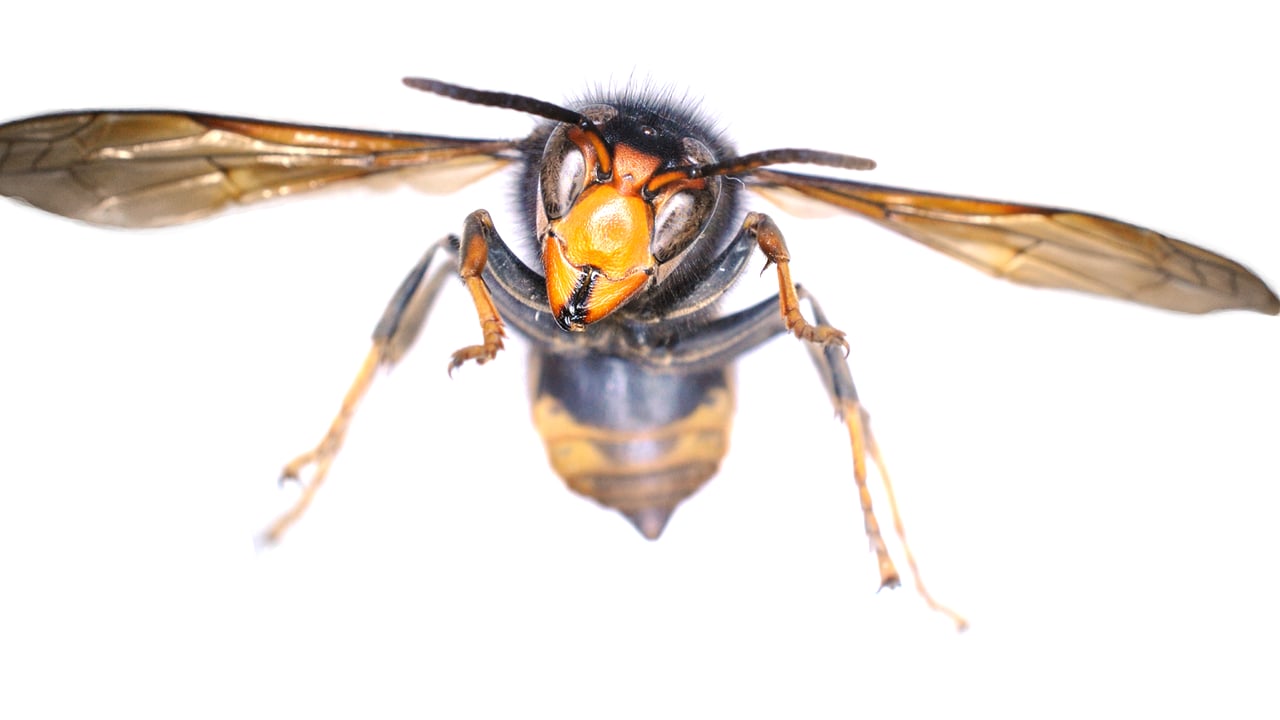Government response underway after sighting of Asian hornet
The National Parks and Wildlife Service (NPWS) has confirmed a recent sighting and subsequent capture of an Asian hornet (Vespa velutina) in the Co. Cork area.
This marks a biosecurity alert for Ireland, according to the Department of Housing, Local Government and Heritage.
The Asian hornet poses a significant threat to biodiversity in Ireland, as even a single nest can devastate honeybee populations.
The discovery of an Asian hornet does not pose a significant public health risk.
The sighting has triggered a government led response with the establishment of a new taskforce.
The Asian Hornet Management Group (AHMG), chaired by the NPWS, includes the Department of Agriculture, Food and the Marine, the National Biodiversity Data Centre and the National Museum of Ireland.
This group will coordinate efforts, gather further information and monitor the situation over the coming weeks.
The sighting was reported to the National Biodiversity Data Centre’s website by a member of the public.
A photograph was included, which was confirmed as an Asian hornet by entomologists at both the National Museum of Ireland and NPWS, triggering a rapid response protocol.
A survey team was quickly deployed and extensive monitoring and surveying conducted. No evidence of a hornet nest or any other hornet activity was initially observed. However, subsequent surveillance led to the trapping of an Asian hornet on August 12.
Extensive monitoring will continue over the coming weeks to determine if this is one individual or if there is evidence of a larger population, the Department of Housing said.
The survey team has engaged with businesses, local communities and stakeholders in the area to raise awareness on how to identify the Asian hornet. Beekeeping associations have been briefed and are "playing their part".
This sighting is the second verified identification of this invasive species in Ireland. The first identification was of a single individual in the Dublin area during 2021, and was not associated with a wild viable population.
Commenting on this incident, Minister of State for nature, heritage and biodiversity Christopher O'Sullivan said: "Asian hornets are a threat to our native pollinators and our biodiversity. We must take even a single sighting very seriously.
"The NPWS responded quickly to this report, with a team of experts rapidly tasked to monitor and survey the area. One individual was captured and a coordinated response is now underway through a new cross government taskforce who will continue to monitor the situation.
"This incident shows us that members of the public are our eyes on the ground. Early detection is key if we are to prevent the establishment of this invasive species," Minister O'Sullivan added.
"I urge everyone to be vigilant and inform themselves so that they can recognise and report any sightings of the Asian hornet to help us contain this invasive species and protect our biodiversity," he said.
Members of the public are being asked to remain vigilant and report any suspected sightings through the National Biodiversity Data Centre’s Alien Watch reporting portal.
If someone suspects they have spotted an Asian hornet, they should not attempt to disturb or capture it. While not generally aggressive, it may sting if provoked.
Any photographs, location coordinates, or samples (if safe to collect post-mortem) are extremely valuable to the response team, the Department of Housing said.
It is important to note that the Asian hornet can be easily confused with native species such as the giant woodwasp, the dark giant horsefly, and the common wasp.
The Asian hornet has spread to and established populations in several EU countries. There are ongoing control efforts in the UK to prevent this species from establishing there. A population of Asian hornets has also been recorded in the US.




